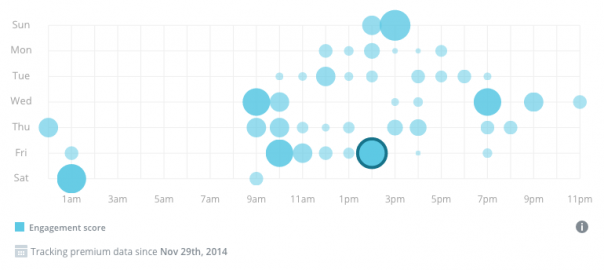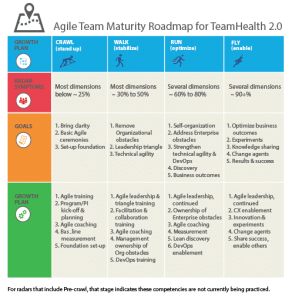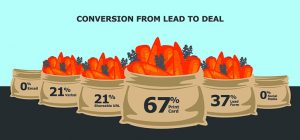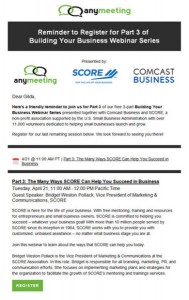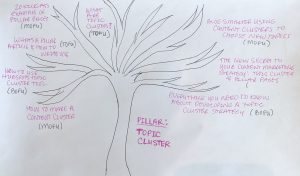When people ask me what is more difficult, writing a blog post or writing a tweet, I always answer hands down a tweet! “But this makes no sense, a tweet is only a few characters long!” is the reaction I get most of the times.
And this is exactly why crafting content for Twitter is so damn hard. Unlike any other form of content a tweet, at least for now, allows for a very limited space to convey your message.
But what’s a tweep’s life without a bit of a challenge, right? Below are seven tricks, some of those I have to admit, had to learn the hard way, that will help you bring your A-game when it comes to sharing tweets that are engaging, retweeted and clicked.
1
Tweet some killer copy
David Ogilvy, the father of advertising said:
On the average, five times as many people read the headline as read the body copy. When you have written your headline, you have spent eighty cents out of your dollar.
Telling a story in 140 characters is no easy thing. According to Copyblogger, on average, 8 out of 10 people will read your headline, but only 2 out of 10 will read the rest. However, there’s one more reason why the most important element of your tweet is the copy itself: headlines are basically a way to set the tone for what your audience is about read.
So the question is, how can you craft kickass Twitter headlines? What you need to keep in mind is that research shows that people tend to process only the first and last 3 words of a headline. This suggests that the perfect length for a headline is 6 words. In the case of longer tweets, the placement of important messages in your copy really matters.
But what makes a good headline? Kissmetrics suggests the SHINE formula:
- Specific: Be as specific and concrete as possible using facts and figures
- Helpful: What is the problem this piece of content is the answer to?
- Immediate: Create a sense of urgency, showing why your audience should engage with your content at that given moment.
- Newsworthy: Nobody will engage with (March 21, 2016)’s news, especially on Twitter. So keep it fresh.
- Entertaining: To really stand out, make your headlines interesting.
Take a look at this super helpful infographic from Quicksprout for some inspiration on winning headline formats.
Courtesy of: Quick Sprout
2
Use all the right words
A tweet can only be as long as 140 characters, so everything comes down to the details. According to social media scientist Dan Zarrella, tweets with exclamation marks are retweeted more than tweets without whereas even your choice of words can determine the reach of your tweets. For example, research shows that words like ‘Social’, ‘Blog’ and ‘Follow’ score a higher number of retweets compared to words like ‘Listening’, ‘Lol’ and ‘Work’.
Zarrella also found that action words such as verbs and adverbs yield a higher click-through rate for tweets with links.

Twitter has conducted its own research, concluding that a good way to optimize your tweets is including calls-to-action such as asking for a retweet, a reply, a follow or a reply.
3
Trigger emotion
As in any other form of marketing, psychology plays a major part in social media. Each of your tweets are able to trigger some sort of emotion for your audience. However, there are certain emotions that are more contagious than others.
Positivity
When I was a social media intern at Greenpeace International I remember my boss always saying that good news travel faster. And she was absolutely right. Researchers from the Universities of California and Yale found that positive emotions spread quite fast on social networks. So sharing something happy and lighthearted is more likely to make your tweets successful.
Rise and shine! #Solarpower is growing rapidly in the US. https://t.co/6SW8rMkE5b #renewables pic.twitter.com/0ACvMnRELR
— Greenpeace (@Greenpeace) March 15, 2016
Surprise
The Harvard Business review identified surprise as the most powerful marketing tool and science seems to support this argument. Researchers from Emory University and Baylor College of Medicine found that surprise is stimulating the human brain in a positive way. Their findings suggest that the brain finds unexpected pleasure more rewarding than expected ones.
Luckily, Twitter provides you with different ways of engaging your audience such as Twitter polls, sweepstakes and contests. Check out some surprising ways to engage with your Twitter audience here.
Curiosity
Carnegie Melon University professor George Loewenstein suggested that the gap between what we know and what we want to know is basically a curiosity gap. This means that what can really trigger curiosity is when we notice a gap in our knowledge.
Publishers like Upworthy and Buzzfeed are famous for embracing Loewenstein’s information gap theory not only in their articles but also in their tweets. What can you learn from them? Giving just enough information leaves your audience no other choice but to ‘ask’ for more by clicking on the links you tweet.
Refugees arrive without backpacks, so these women found a way to make them — from boats. https://t.co/jSaxE2Xx4X pic.twitter.com/Ko78ZNmqdc
— Upworthy (@Upworthy) March 9, 2016
4
Enhance your tweets with compelling visuals
Twitter suggests that amplifiers, Twitter users that are most likely to retweet a brand’s post, are also more likely to view photos on Twitter (90%), tweet photos (107%) and videos (89%). This comes as no surprise if you add the fact that visuals are processed 60,000 times faster in the brain than text. And on Twitter with all this overload of information you have nothing more than a split second to capture the audience’s attention. Therefore, visuals can help you stand from the crowd.
Let’s take a look at three tools that are simple to use without necessarily requiring pro design skills.
Canva is a great tool for creating professional looking images for social media in less than 3 minutes. The best part is that you shouldn’t worry about the size of your images since Canva offers templates of visuals for all major platforms.
Piktochart is great for creating infographics in just a few minutes. What is helpful is the wide range of themes to choose from and the freedom the tool offers in customizing templates to fit your style and needs.
Wideo is a handy tool for creating videos for social media, quickly and easily. The free version allows you to choose from a selection of templates and produce videos up to 45 seconds which is the ideal length for a social media post.
5
Mind your characters
When writing your tweet, keep in mind that length matters. Social media scientist, Dan Zarrella suggests that tweets that are 100 to 115 characters long are more likely to be retweeted.

6
Understand the power of the right hashtag
Twitter is the home of hashtags. So as such, the way hashtags are used is multifaceted. Hashtags are a way to be a part of a larger conversation with other Twitter users.
They are meant to tag and categorise information under a specific subject and define specific topics of conversation. Twitter hashtags have been used several times in the past as a tool to follow worldwide events.
Other than that, Twitter hashtags have been used quite extensively to set the tone and convey voice and character.
Hashtags can be a powerful tool in the hands of social media marketers for several reasons:
- Hashtags allow them to connect with their audience across platforms in a consistent, unified way.
- They help amplify you message and boost a brand’s visibility.
- Hashtags make content easier to discover given that hashtags work as hyperlinks and a new way for people to search for specific content on different platforms.
- They allow marketers to launch integrated marketing campaigns across platforms.
- Hashtags can help start your own discussions with your community or jump into conversations already happening.
- Hashtags maximize social media engagement.
Social media science has proved that on Twitter hashtags are a driver of engagement with tweets that contain one or more hashtags being 55% more likely to be retweeted than tweets that don’t.

Twitter hashtags can potentially be a major driver of traffic if they are used wisely. Even though only 10% of tweets include a hashtag, 21% of retweets contain hashtags.
However, the more the hashtags the less the engagement of your tweets. In fact, tweets with one or two hashtags have 21% more engagement than tweets with more. After the third hashtag, tweets engagement has been found to drop by 17%.

But how can you make sure that you use the right hashtags for your business? Let’s take a look at a couple of tools that can help you out.
Hashtagify.me
This tool is great for visualising correlations among hashtags and discovering relevant hashtags around a specific topic. You can start with a general hashtag for your industry and see which other hashtags are used along with it. Keep in mind that the size of each circle represents the popularity of the hashtags and the length of the lines connecting your search query to the related hashtags reflects how relevant these hashtags are.
RiteTag
RiteTag’s browser extension is a quite a useful tool for estimating the potential visibility of your tweet. RiteTag uses color coding to categorize the hashtags and notify you whether the hashtag you just typed is not used, overused or just right for amplifying your message and increasing its chances of being discovered.

7
Know that timing can really make a difference
In a recent study, Buffer found that the highest amount of engagement per tweet occurs between 11:00 p.m. and 5:00 a.m., peaking between 2:00 and 3:00 a.m. In an older research, Dan Zarrella had found that the best time to tweet if your aim for retweets is in the afternoon with a peak at 5 pm and a frequency mix of 1 to 4 tweets per day. Bit.ly’s findings on the other hand suggest that posting in the afternoon earlier in the week is your best chance at achieving a high click count (1-3pm Monday through Thursday).
At the end of the day, when and how often you should tweet may vary from account to account as it depends on several different factors such as audience size, time zone, type of content etc. For example, for Twitter Counter’s Twitter account, we found out that shifting to a once-an-hour, round the clock posting strategy had a positive effect on the overall engagement of our account.

What it is important is to use the right tools and run your own experiments on a frequent basis. Followerwonk is one of the tools that can tell you when your Twitter followers are online.
What I try to keep an eye on for my account is the best time to tweet based on the engagement my tweets have received in the last week or last few months and use this as a reference for experimentation.

Remember that on Twitter, it is OK to repeat content as long as you present it in a fresh way using a different visual or copy for example. In fact, repeating content on social is key to boosting traffic and expanding your reach.
However, it is important to experiment with different frequencies. Timing is equally important to maximize the exposure of your posts depending on where your audience is.
Conclusion
What is important to remember is that nothing is written on stone. Yes, there are some general rules of thumb and best practices but in order to find what resonates best with your Twitter audience, you have to keep a close eye on some key metrics such as engagement, audience growth, traffic and leads generation.
Digital & Social Articles on Business 2 Community(72)
